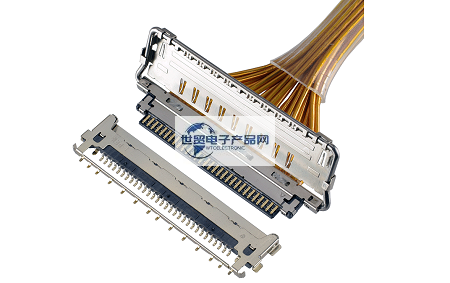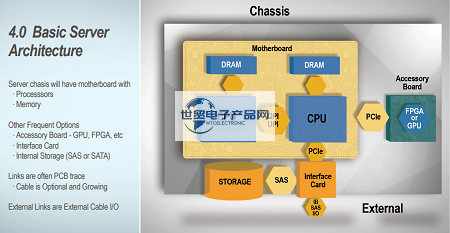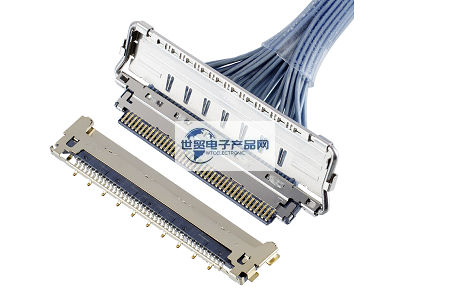Categorization:Product Information
Today's computing environment requires an unprecedented level of complexity for enterprise-class devices. With the increase of data transmission rate, the performance limited by standard materials further exacerbates the complexity problem. Faster data transmission rates require faster rise times, which also leads to more high-speed signal losses. Although this defect can be remedied by high-performance laminates, the effect is not significant and the cost increases greatly. The new processors and motherboards will handle more input/output (I/O), which will increase the wiring and layout density of PCB. With the exception of PCI Express ®, onboard storage applications may attempt to wiring to high-speed SAS. PCIe or SAS I/O signals may cause channel length-based losses due to the longer distances required to travel within the server chassis. Adopting PCIe retimer is one of the options, but with it comes an increase in cost and complexity. Because retimer will increase the delay of signal transmission, it cannot provide an adequate solution for high-performance computing. These conflicting demands make PCB designs more congested. Increasing the number of layers is also an option, but it will have an impact on cost and performance. Reducing the trace width is not a good choice because it results in further shortening the distance the signal reaches at the same data transmission rate. Increasing the trace width as a remedy will increase the congestion problem of PCB, and wiring problems from small-pitch components will also occur and lead to. The CABLINE ®-VS II Extremely Fine Coaxial Connector is a high-speed differential coaxial-to-board connector system best suited to the performance and mechanical needs of enterprise-class computing devices.

1. What should a system architect do? : In recent years, we can see an increasing trend in the application of high-speed internal cable assemblies. At the same time, more and more industry standards have been set for cable-to-board systems by, for example, the T-10 SAS Committee of the American Standards Institute (ANSI). SAS 4 is capable of 22.5 Gbps and has parts that support this specification. Others such as PCI Express (PCIe) have non-specified components, but are typically SAS-type components. PCIe 3.0 has a specification of 8GTps, but cannot interconnect cable assemblies. PCIe 4 has a specification of 16GTps and is the PCIe standard that defines the internal cable assembly system. PCIe is used to connect processors to SAS controllers and other peripherals, such as general-purpose graphics processors (GPUs). GPUs can occupy up to 16 channels of PCIe (32 pairs plus frequency and ground), and most applications are used in mission-critical and/or high-performance devices. Today's enterprise servers can incorporate multiple GPUs into the chassis. Due to the PCB loss and the distance required between all system components, it is impractical to assemble the GPU to the PCB.
2. Dual differential cable assemblies can fill this gap and provide more mechanical options for GPU configuration: Since the power consumption and heat dissipation of the system will rise with the processor and GPU, configuration is an important consideration. Airflow is also the key, and it can't be stopped. The challenge of using cable assemblies is how to meet the mechanical and connection requirements while avoiding the obstruction of airflow. Therefore, it is important to consider the mechanical standards in the vicinity of the cable assembly. Low height, low loss, density and flexibility are all features that are hoped to be met. Some cable assemblies need to be complicated to route through a certain system, requiring a larger bending radius and taking up more space. Although some cable assemblies are low in height, they require fine folding. Most cable assemblies do not have 360 degrees of flexibility or use solid conductors to increase the rigidity of the cable. The CABLINE ® CA-II Extremely Fine Coaxial Pair-to-Board Connector features 360-degree EMI shielding, providing greater flexibility in on-board configuration.
There has been a long history of using ultra-thin coaxial components on laptops and other devices. In the case of USB-C, the transmission speed can be as high as 20Gbps. The coaxial line can be driven differentially, and the impact on the signal integrity function can be reduced to a minimum. The excellence of ultra-thin coaxial assemblies is similar to that of biaxial assemblies, but because most ultra-thin coaxial assemblies use stranded wires, the flexibility is greatly increased. In addition, what needs to be considered is the greater benefit brought by the economies of scale in the mobile computing market, the cost reduction of ultra-fine coaxial components. The performance of extremely fine coaxial components is improved by direct termination. This eliminates PCB losses and reduces additional terminations associated with the PCB. These redundant discontinuities and reflective sources can reduce signal integrity. The wire arrangement of the cable assembly is available in a planar, bonded, or hybrid configuration. The connector provides extremely low height termination, making it possible for fully shielded right-angle emission with a height of less than 2mm, and provides vertical shielded termination with latch and other functions. The application possibilities are wide, including direct jumper assemblies on a cross-board, as well as low-height assemblies that can be routed under the main board between the PCB and the chassis or between parts and chassis sidewalls. High temperature resistant cables are also provided to help solve all application-related temperature problems, so that connectors can be configured near the processor.
---------------------------------------------------------------------------3. About Shimao Electronic Product Network platform introduction and sales product brief description: Shimao Electronic Product Network is a professional, accurate and vertical comprehensive product sales platform for the electronic industry focusing on the supply, demand and sales of connector harness and cable products! Specializing in the production/sales of {Connector Harness Cable Products}; If you have [high-speed internal cable assembly products] purchase/purchase, sales/resource and promotion needs, please contact us through the following methods.